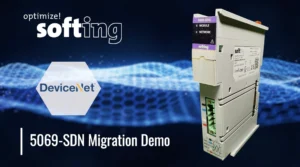Consider APIs as part of your fiber network management strategy
Guests Michael Measels, Vice President of Product Management at 3-GIS, and Matt Sherrod GTM Americas Service Provider, from Blue Planet, joined Host Hilary Kennedy to discuss customers’ desired shift from traditional models of fiber network management to open systems.
The desire for openness is driven by its ability to deliver complex services faster, generate increased revenue, improve customer experience, and facilitate faster subscription growth.
Another driving factor is a newly educated customer base. Closed systems are no longer able to provide the necessary throughput. Now, communication service providers (CSPs) who are not top-tier providers want to know that APIs can connect to downstream systems. Measels stated, “The market has come on saying we must have more connectivity with APIs.” He added, “Customers are coming to the table in a more informed way.” Increased customer knowledge has raised expectations for service value and reliability. Sherrod added, to be able to meet these new expectations “you really need a set of integrated GIS and inventory.”
When CSPs attempt to manage a fiber network with siloed apps, inefficiency, and poor customer support result. “Without an openness, without APIs to share that info, they would just be stuck in silos trying to throw manpower to solve a problem and you simply can’t do that when you’re a market that has to scale this efficiently,” Sherrod explained. Open APIs allow visualization of services that depend on specific cable routes. Because of this, traffic rerouting can repair a link without impacting others.
Measels believes, “The future is already here in terms of expectations from customers [CSPs] in the market.” He continued, “There are data silos that exist today, and getting the data to systems that can interoperate data is the most important thing moving forward.”
To listen to this episode or to find more, look for Fiberside Chat on Apple iTunes.









